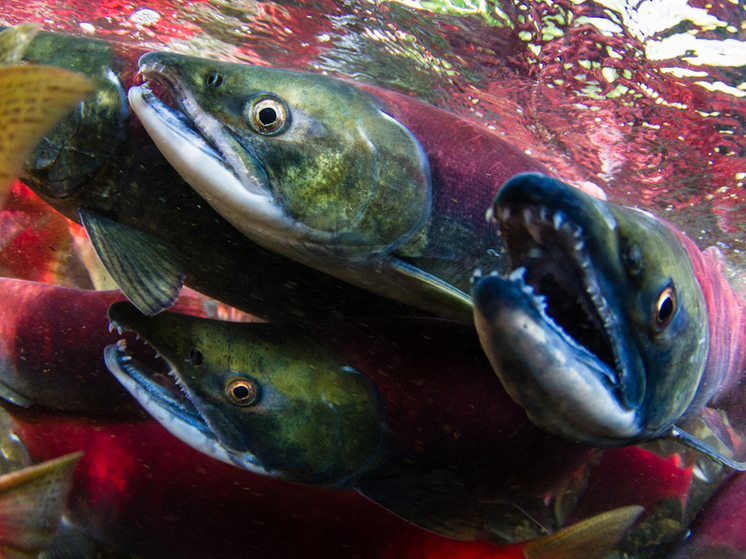Researchers continue to elucidate the functionality of such teeth
In the ancient depths of the Pacific Ocean, according to experts, there once lived a giant prehistoric sea salmon, Oncorhynchus rastrosus, which had tusk fangs. Using new imaging technologies, researchers have unraveled the mysteries of this amazing species, revealing an amazing story of survival and adaptation in ancient marine ecosystems.

The oldest fossils of Oncorhynchus rastrosus, discovered on the California coast and dating back to approximately 12 million years ago, tell the story of a salmon that reached 2.7 meters in length and weighed almost 200 kilograms. Although modern Pacific salmon are impressive in size, none can match the enormous size of Oncorhynchus rastrosus. Initial analysis of the fossils revealed strange teeth that resemble tusks, sparking surprise and curiosity among scientists.
Previously, researchers believed that the large front teeth of this fish species, for which it received the nickname “saber-tooth salmon,” were directed deep into the mouth. But a recent analysis used CT scanning to study salmon fossils. This non-invasive imaging technique showed that the salmon's teeth were pointing sideways and more closely resembled the fangs of warthogs than the fearsome fangs of saber-tooth tigers.
But why did these giant prehistoric salmon have such fangs? Researchers have put forward several theories suggesting that they were used to protect themselves from predators, compete with other salmon, or even dig nests in the rivers where they spawned.
Professor Keryn Claeson from the Philadelphia College of Osteopathic Medicine explains that these findings challenge previous views of Oncorhynchus rastrosus as the dominant predator in its habitat. Indeed, unlike modern fish-eating salmon, Oncorhynchus rastrosus fed on plankton, positioning itself most likely as desirable prey in ancient waters.
“Finds like ours show that they were probably not gentle giants,— explains Keryn Claeson. — These massive spines on the tips of their snouts would be useful for defense against predators, competition with other salmon, and ultimately for building nests where they could care for their young.
Research author Edward Davis expressed enthusiasm for the new discoveries: «I'm glad we were able to take a new look at the giant spiketooth salmon, bringing knowledge gained on the ground in Oregon to the world.» Ichthyology expert Brian Sidlauskas also emphasized that both females and males had huge, fang-like teeth. Consequently, both sexes were equally fearful. This feature highlights the potentially aggressive and competitive nature of both male and female razortooth salmon.
«Because males and females possess hypertrophied premaxillary muscles and lateral premaxillary spines, we have renamed Oncorhynchus rastrosus spinytooth salmon and suggested that his teeth were multifunctional,” — scientists concluded.

























































Свежие комментарии